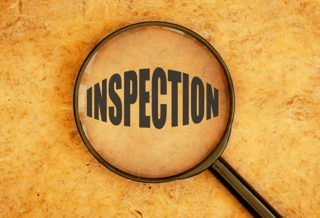 Sometimes, perception of the amount of product in a package is just as important as the actual weight content of the package. When a customer opens up a bag of, say, potato chips and sees that the package is less than half full, they’re not going to be pleased, even if the package has the right content weight.
Sometimes, perception of the amount of product in a package is just as important as the actual weight content of the package. When a customer opens up a bag of, say, potato chips and sees that the package is less than half full, they’re not going to be pleased, even if the package has the right content weight.
The issue here is one of perception: the customer thinks that they’re being shorted because the chip bag looks mostly empty, although they’re getting exactly the amount of product that they paid for.
Empty/missing/low level product is a leading customer complaint in packaged food products, and one that can cost customer trust. Nobody likes to buy a bag of air when they paid for food, after all.
This is one of the reasons why many packaged food manufacturers use x-ray product inspection technology. With x-ray inspection, these companies can perform a fill-level inspection on sealed product packages, preventing the distribution of packages that contain more air than product.
Note that while fill-level checks do rely on grayscale x-ray images, they are different from mass measurement checks.
What Makes Fill-Level Inspection Different from Mass Measurement?
If both fill-level inspection and mass measurement with x-ray machines rely on grayscale images to analyze products, what makes them different?
First, mass measurement relies on a three-dimensional image that is cross-referenced with a previously-run reference standard to calculate the actual weight of the package’s contents. If the calculated mass is within the range of maximum or minimum weight tolerance, it’s accepted. If the package contents fall outside of the programmed tolerance, it will be rejected.
However, a fill-level inspection uses a 2D image that makes a much simpler check: do the contents of the package reach the required fill level? If the product meets or exceeds the minimum fill level, the package passes. If not, the package is rejected.
Another key difference is that even if the actual weight of the contents is below the recommended weight, the package would pass in a fill-level inspection so long as the contents reached the right fill level. In a mass measurement inspection, the contents would be rejected based on the lack of weight or mass.
Overall, fill-level inspection tends to be more effective than mass measurement for some products. This is because the accuracy of mass measurement tends to suffer on products where ingredients, consistency or density may change from one batch to the next.
Why Use Fill-Level X-Ray Inspection?
As mentioned in the above paragraph, the accuracy of a mass measurement system suffers when dealing with loosely-packed, irregular products. However, with a fill level inspection system, this is less of an issue. Either the package meets its fill level requirement, or it doesn’t.
This simplicity makes it easy to manage/prevent the production of under-filled packages.
Some systems may even be set up to allow you to add more product to the package if the fill level is low. This is especially useful when packaging fluid products such as tomato sauce or loose powder products such as chocolate milk mix. So, rather than scrapping a package, it may be possible to just top it off so that it isn’t under-filled, reducing waste.
Automating this process just makes production faster and more efficient.
Overall, fill level inspection technology is a great option for packaged products where mass measurement wouldn’t work as optimally.
It’s all just another part of the benefits of using x-ray product inspection.




